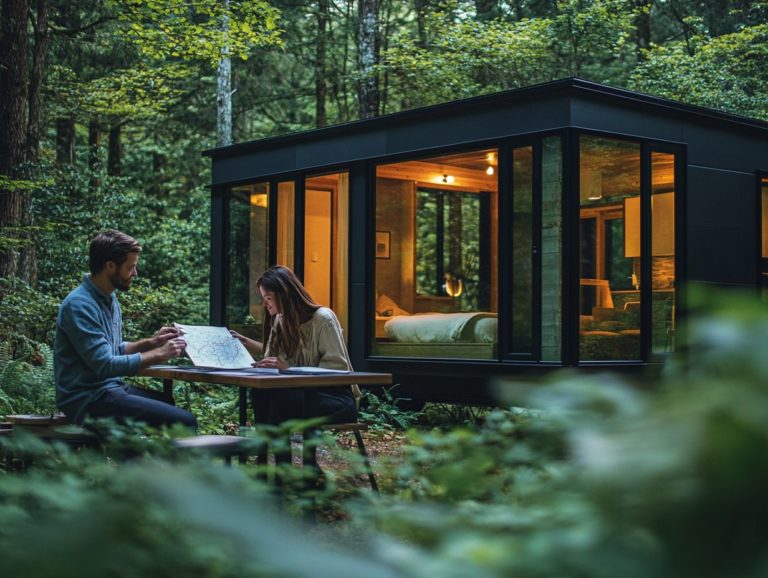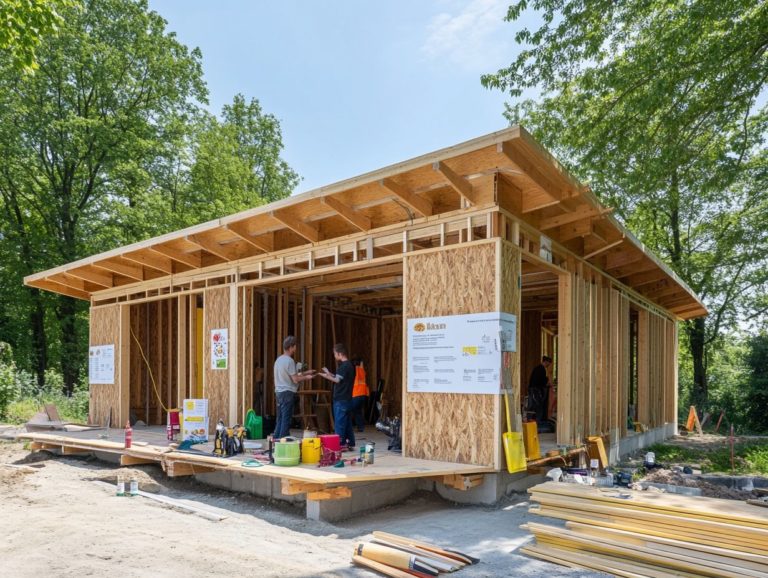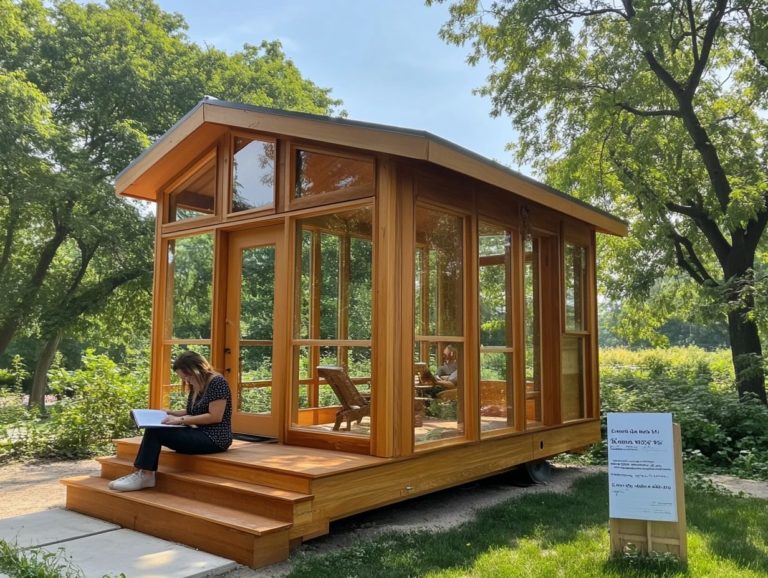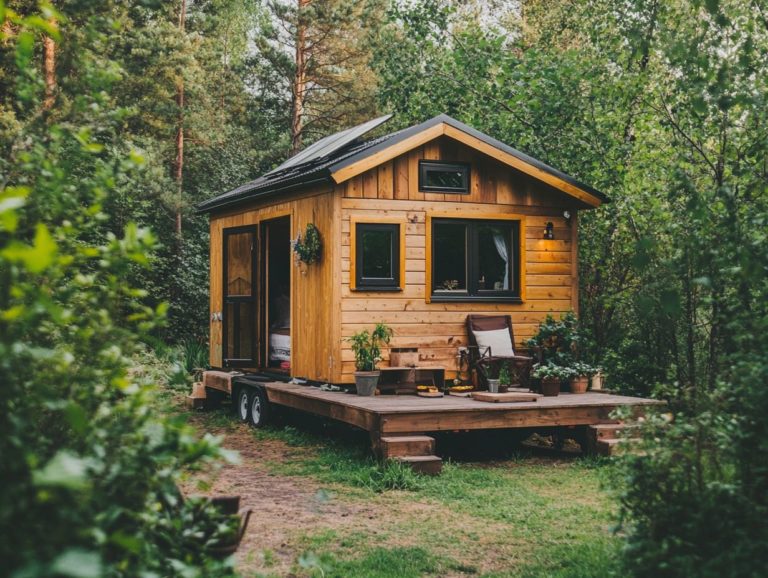The Role of Building Codes in Tiny House Design
Building codes are fundamental to the construction of any dwelling. They ensure safety, accessibility, and structural integrity. As a tiny house enthusiast, understanding these codes is vital, as they greatly affect your design choices and the overall feasibility of your project.
This article explores the definition and purpose of building codes. It examines their influence on tiny house design and the challenges you may encounter while navigating local regulations. Additionally, it presents alternatives for those looking to bypass traditional guidelines. This knowledge empowers you to build both safely and creatively.
Discover how to turn your tiny living dreams into reality while navigating building codes!
Contents [hide]
- Key Takeaways:
- What are Building Codes?
- Building Codes and Tiny House Design
- Navigating Building Codes for Tiny House Construction
- Ensuring Safety and Compliance
- Alternatives to Traditional Building Codes
- Frequently Asked Questions
- What are building codes and how do they relate to tiny house design?
- Are you ready to explore the benefits of alternative building options?
- Are there specific building codes for tiny houses?
- What are some of the key building codes that must be considered in tiny house design?
- Can I design and build my own tiny house without following building codes?
- Do I need a permit to build a tiny house that follows building codes?
- How can I ensure my tiny house design complies with building codes?
Key Takeaways:
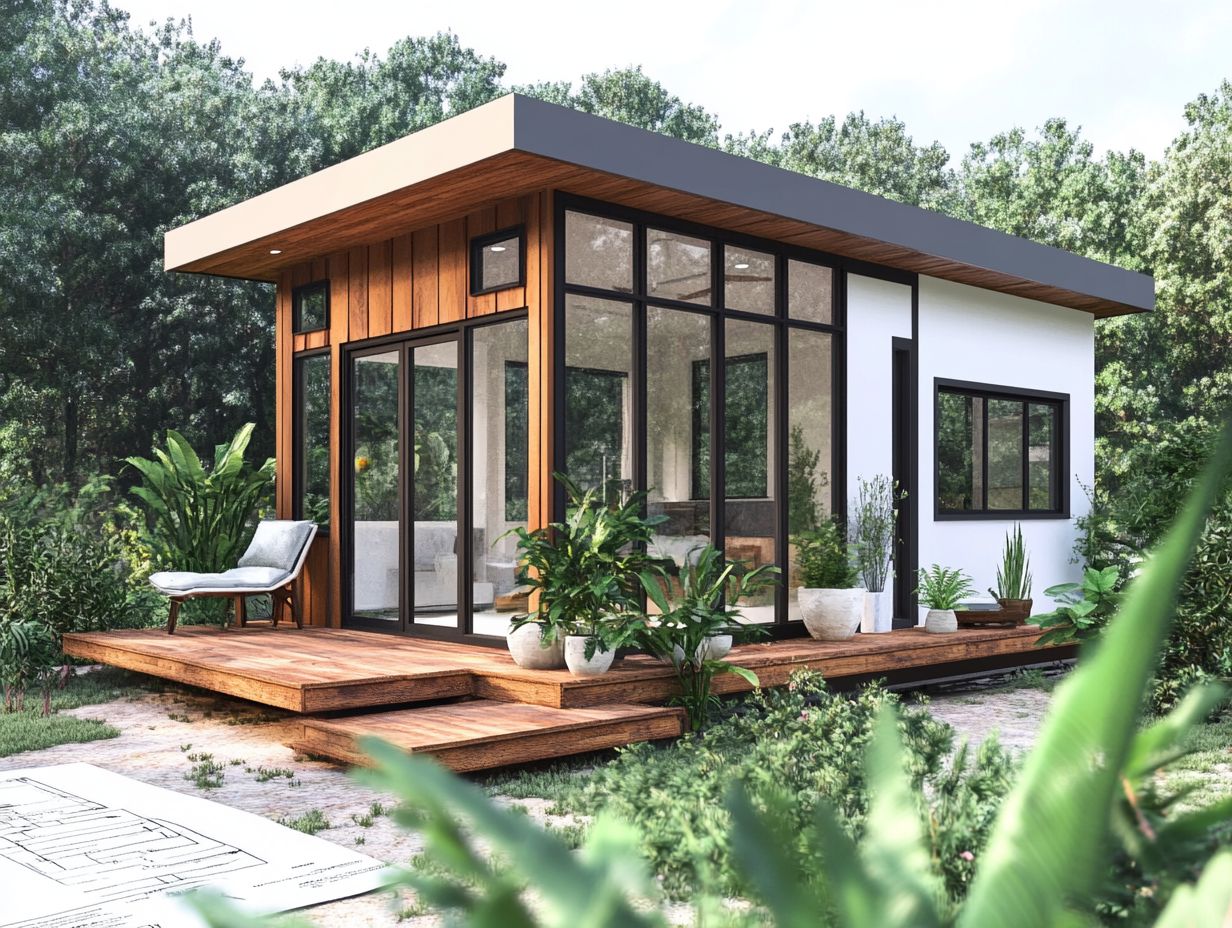
- Building codes are regulations that ensure the safety and livability of homes.
- Tiny house designers must navigate building codes to ensure compliance and safety.
- Understanding local regulations and working with building officials is crucial for successful tiny house construction.
What are Building Codes?
Building codes represent a comprehensive framework of regulations instituted by local, state, and national agencies. They aim to safeguard the public’s safety and welfare, including various building standards for both residential and commercial properties.
These codes encompass a wide array of construction elements. They include zoning laws, which are rules about where different types of buildings can be situated; safety standards; and energy efficiency guidelines. For anyone considering a tiny home, understanding DIY tiny house building codes is essential in the construction industry.
They serve to protect homeowners and renters alike. These regulations promote sustainable living practices and ensure adherence to international standards, such as the International Residential Code, Appendix Q, and ANSI A119.1 for manufactured housing. Additionally, understanding tiny house codes is essential as these standards specifically address the diverse housing needs across the U.S.
Definition and Purpose
The term “building codes” refers to the essential rules and regulations designed to guide the creation and construction of safe and compliant residential structures.
These comprehensive standards play a vital role in safeguarding your well-being. They ensure buildings can withstand various environmental stresses, like earthquakes and severe weather. It’s not just about safety; tiny house regulations and building practices also support energy efficiency, encouraging builders and homeowners to adopt practices that lower energy consumption and reduce carbon footprints.
These regulations protect public welfare by mandating features that enhance accessibility for individuals with disabilities. They foster healthier and more inclusive environments. Ultimately, following these guidelines, including understanding tiny house building codes, contributes to cultivating communities that prioritize safety and sustainability while considering the environmental impacts of construction practices.
Building Codes and Tiny House Design
Building codes play a crucial role in shaping tiny house design. These regulations establish the construction standards necessary for creating safe and livable spaces within compact residences. By understanding and adhering to these codes, you ensure that your tiny home meets legal requirements and offers comfort and security, enhancing the minimalist aesthetic in its limited footprint.
How Building Codes Affect Tiny House Design
Building codes significantly impact your tiny house design. They lay out essential construction standards that you must follow for safety and compliance. These regulations dictate everything from the materials you choose to the architectural specifics of your home.
For instance, some codes might require the use of fire-resistant materials to enhance safety and reduce risks in your compact living space. Additionally, understanding tiny house zoning laws is crucial, as the spatial limitations outlined in these codes prompt creative thinking, often leading to innovative design solutions like multi-functional furniture and space-saving equipment that maximize utility while ensuring comfort.
Compliance with these codes can affect key safety features, such as the dimensions of windows for egress, ensuring you have reliable emergency exits. As a tiny house builder, you navigate a complex interplay of creativity and regulatory demands, crafting a unique home that respects both your aesthetic vision and the necessary legal requirements, while also considering the role of sustainability in tiny house construction.
Challenges and Controversies
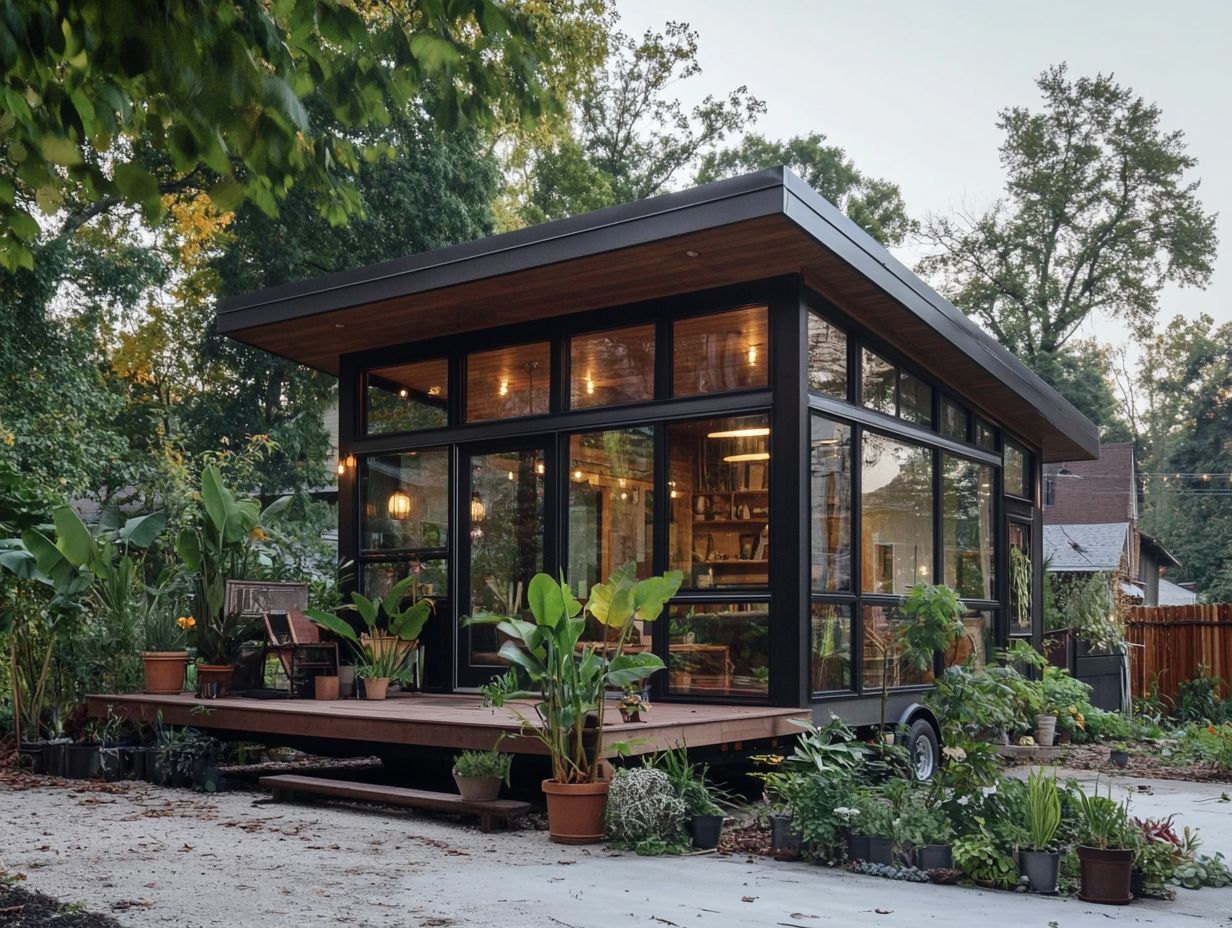
The challenges surrounding building codes in the tiny house market often stem from legal complexities related to zoning laws. These laws complicate how tiny houses are classified, making it harder for advocates to gain acceptance in resistant communities.
Municipalities often lack clear definitions for tiny homes. This leads to misunderstandings and legal ambiguities, creating obstacles for tiny house supporters.
Resistance can stifle innovation and hinder affordable housing options for those interested in a minimalist lifestyle. It s essential to push for policy reform that fosters a more inclusive environment for tiny home living.
Navigating Building Codes for Tiny House Construction
Navigating the building codes for tiny house construction requires a keen understanding of local regulations and effective communication with building officials, particularly regarding digital codes. This ensures you remain in full compliance, paving the way for a seamless construction process.
Understanding Local Regulations
Understanding local regulations is vital for your tiny house construction. These rules can vary significantly from one municipality to another, affecting everything from construction costs to available housing opportunities.
Navigating this intricate landscape demands thorough research. Non-compliance can result in hefty fines or even dismantling your beloved structure. For anyone keen on building a tiny house, it’s essential to tap into online resources like municipal websites, zoning boards, and local planning offices, as well as checking out tiny house construction legal requirements to gather the necessary information.
Connecting with local builders or tiny house communities can provide valuable insights into successful compliance practices. Grasping these laws shapes your design process and influences your construction methods and materials, ensuring your tiny haven remains cozy and legally sound.
Working with Building Officials
Collaborating with building officials is essential for ensuring compliance in tiny house construction. These experts offer invaluable guidance on safety standards and relevant codes, including ANSI A119.5, a safety standard for tiny homes.
Cultivating a positive relationship with officials can lead to smoother interactions throughout your construction journey, promoting an efficient process in securing your home ownership.
Communication is paramount. By keeping officials updated on project timelines and potential changes, you can effectively minimize misunderstandings.
Presenting detailed plans is critical. This not only demonstrates your adherence to local regulations but also highlights your commitment to safety.
Being open to feedback promotes collaboration and fosters trust, paving the way for a more efficient approval process and contributing to the success of your tiny house project, especially in the context of the tiny home market.
Ensuring Safety and Compliance
Ensuring safety and compliance is crucial for you as a tiny house builder. Adhering to building codes and construction standards is essential to create secure and livable homes that meet the highest expectations while considering the construction costs involved.
Your commitment to these principles safeguards the well-being of your clients and elevates the quality and credibility of your work in the industry.
Key Considerations for Tiny House Builders
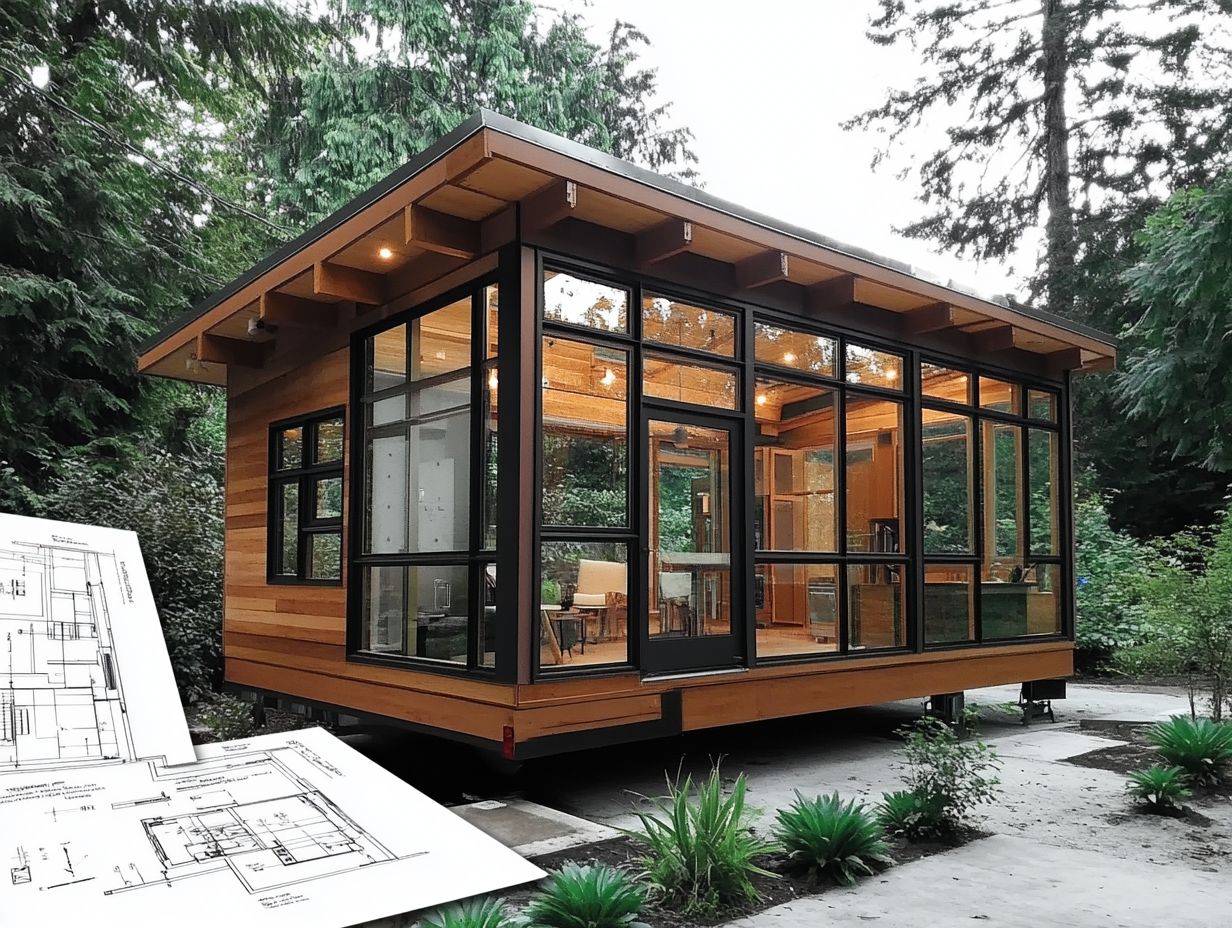
As a tiny house builder, you must consider several key factors to ensure compliance with safety standards. This includes understanding building codes and achieving a minimalist aesthetic.
Selecting the right materials is essential. You want options that offer durability while also being efficient. Thoughtful design choices will help maximize space, turning every square inch into a functional area with multi-purpose features.
Proper insulation is crucial for energy efficiency. It regulates temperature and minimizes utility costs.
Regular inspections during various construction phases are vital. They allow you to identify potential issues early, ensuring every aspect aligns with local regulations, including tiny house building codes. By prioritizing these elements, you can craft safe, functional, and good-looking tiny homes that meet the demands of modern living while considering environmental impacts.
Alternatives to Traditional Building Codes
Discover exciting alternatives to traditional building codes that can transform your tiny house project! Exploring these options opens up a world of valuable choices, especially in areas where zoning laws might present obstacles for manufactured housing.
By considering these alternatives, you can navigate the complexities of local regulations while creating a space that aligns with your vision.
Options for Those Looking to Avoid Building Codes
If you’re looking to sidestep traditional building codes, consider options like manufactured housing or select tiny house designs that comply with alternative regulations.
These approaches provide flexibility in design and cost-effective solutions for those interested in unconventional housing. Manufactured homes, built in factories, may bypass some stringent building codes thanks to their unique classification.
Similarly, tiny houses built according to specific guidelines offer a minimalist lifestyle while adhering to certain local regulations.
While these alternatives can bring significant benefits in terms of affordability and lower maintenance, be aware of potential drawbacks. Acceptance by local authorities can vary, and financing options may be limited. Therefore, it s crucial to thoroughly research these factors before making a decision.
Frequently Asked Questions
What are building codes and how do they relate to tiny house design?
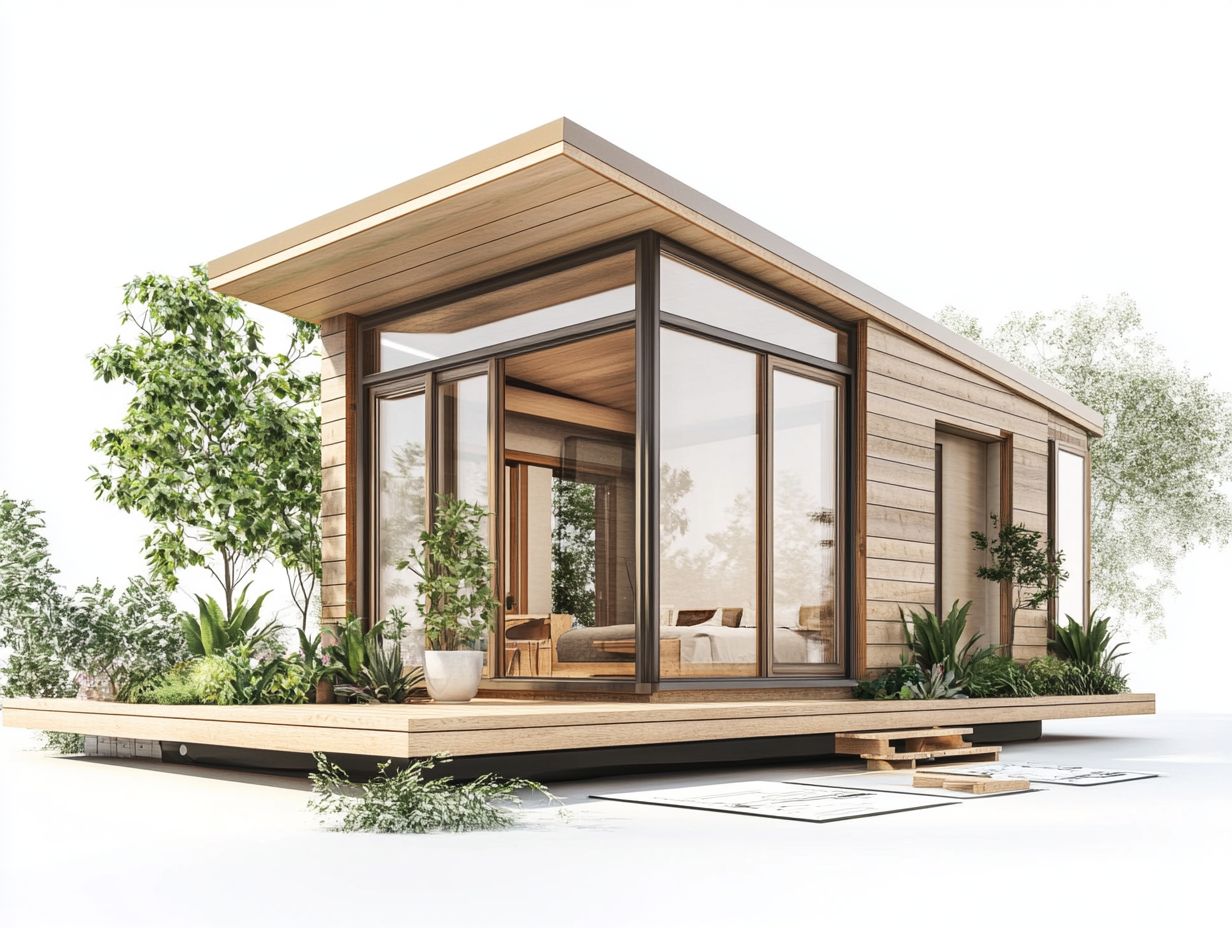
Building codes are a set of regulations dictating the minimum standards for construction and safety. They apply to all types of structures, including tiny houses and accessory dwelling units. Following these codes is essential to obtain necessary permits and ensure safety, especially in consideration of the International Residential Code.
Are you ready to explore the benefits of alternative building options?
Explore your local building codes and consider contacting a tiny house builder for advice on how to move forward with your project!
Are there specific building codes for tiny houses?
Currently, there are no specific building codes for tiny houses. However, they must comply with all relevant local and national building codes, including the International Residential Code, which may vary depending on location, such as California or Virginia, to ensure safety and compliance.
What are some of the key building codes that must be considered in tiny house design?
Some key building codes for tiny house design include those related to the foundation, structural integrity, fire safety, plumbing, and electrical systems. Additionally, ANSI A119.1 and ANSI A119.5 for manufactured housing guide the construction standards.
Can I design and build my own tiny house without following building codes?
It is not recommended to design and build a tiny house without following building codes. Not only is it illegal in most places, but it also puts the safety of people living in the house and neighboring properties at risk, leading to legal grief and potential issues with the construction industry.
Do I need a permit to build a tiny house that follows building codes?
Yes, you will still need to obtain a permit to build a tiny house that follows building codes, whether it s classified as a manufactured housing unit or a tiny home. This ensures that your design complies with all safety and structural standards and is approved by local authorities, thus facilitating home ownership.
How can I ensure my tiny house design complies with building codes?
To ensure your tiny house design complies with building codes, consult a skilled architect or builder knowledgeable in tiny house design and familiar with local building codes. They can help you navigate the regulations, ensuring your design is up to code while incorporating multi-purpose features and space-saving equipment for optimal energy savings.


